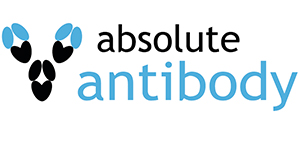Anti-OPGL (9H7)
Anti-OPGL [9H7], Recombinant, IgG kappa, Rabbit
SKU
ABAAb04111-23.0
Packaging Unit
100 μg
Manufacturer
Absolute Antibody
Availability:
loading...
Price is loading...
CloneID: 9H7
Antigen Long Description: The original antibody was generated by immunizing transgenic HuMab mice with purified recombinant OPGL derived from E. coli or CHO cells. Sera from immunized mice were tested for antibody binding to OPGL.
Buffer Composition: PBS with 0.02% Proclin 300.
Available Custom Conjugation Options: AP, HRP, Fluorescein, APC, PE, Biotin Type A, Biotin Type B, Streptavidin, FluoroProbes 647H, Atto488, APC/Cy7, PE/Cy7
Uniprot Accession No.: O14788
Specificity Statement: This antibody is specific for human OPGL. In vivo experiments have shown cross reactivity with Cynomolgus Monkey OPGL.
Application Notes (Clone): The binding affinity of this antibody's original format (human IgG1) to hOPGL was confirmed by ELISA. Its binding kinetics to hOPGL 140 and hOPGL 158 was measured by SPR analysis; a KD of 0.193 nM was measured for hOPGL 140. This antibody was evaluated for its neutralizing activity against osteoclast formation induced by Osteoprotegerin ligand (OPGL) using RAW 264.7 cells, as measured by tartrate-resistant acid phosphatase (TRAP) activity; it inhibited osteoclast formation in a dose-dependent manner with an IC50 of 129 ng/ml. This antibody's pharmacokinetics and in vivo activity were assessed in cynomolgus monkeys. The antibody's levels in the serum declined slowly over the testing period; the last detectable measurement on day 49 showed a serum concentration of ~100 ng/ml. serum N-telopeptide (serum N-Tx) levels were greatly reduced compared to baseline immediately following injection (~minus 45%), further decreased to ~minus 75% over four days, and remained stable for a period of two weeks, after which they began to gradually increase until no longer lower than baseline in a statistically significant manner between day 35 to 42 (US7718776B2).
Antigen Long Description: The original antibody was generated by immunizing transgenic HuMab mice with purified recombinant OPGL derived from E. coli or CHO cells. Sera from immunized mice were tested for antibody binding to OPGL.
Buffer Composition: PBS with 0.02% Proclin 300.
Available Custom Conjugation Options: AP, HRP, Fluorescein, APC, PE, Biotin Type A, Biotin Type B, Streptavidin, FluoroProbes 647H, Atto488, APC/Cy7, PE/Cy7
Uniprot Accession No.: O14788
Specificity Statement: This antibody is specific for human OPGL. In vivo experiments have shown cross reactivity with Cynomolgus Monkey OPGL.
Application Notes (Clone): The binding affinity of this antibody's original format (human IgG1) to hOPGL was confirmed by ELISA. Its binding kinetics to hOPGL 140 and hOPGL 158 was measured by SPR analysis; a KD of 0.193 nM was measured for hOPGL 140. This antibody was evaluated for its neutralizing activity against osteoclast formation induced by Osteoprotegerin ligand (OPGL) using RAW 264.7 cells, as measured by tartrate-resistant acid phosphatase (TRAP) activity; it inhibited osteoclast formation in a dose-dependent manner with an IC50 of 129 ng/ml. This antibody's pharmacokinetics and in vivo activity were assessed in cynomolgus monkeys. The antibody's levels in the serum declined slowly over the testing period; the last detectable measurement on day 49 showed a serum concentration of ~100 ng/ml. serum N-telopeptide (serum N-Tx) levels were greatly reduced compared to baseline immediately following injection (~minus 45%), further decreased to ~minus 75% over four days, and remained stable for a period of two weeks, after which they began to gradually increase until no longer lower than baseline in a statistically significant manner between day 35 to 42 (US7718776B2).
| SKU | ABAAb04111-23.0 |
|---|---|
| Manufacturer | Absolute Antibody |
| Manufacturer SKU | Ab04111-23.0 |
| Package Unit | 100 μg |
| Quantity Unit | STK |
| Reactivity | Human, Cynomolgus Monkey (Primate) |
| Clonality | Recombinant |
| Application | ELISA, Neutralization, Super-Resolution Microscopy, In Vivo Assay |
| Isotype | IgG kappa |
| Host | Rabbit |
| Product information (PDF) | Download |
| MSDS (PDF) | Download |

 Deutsch
Deutsch







